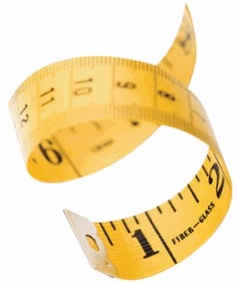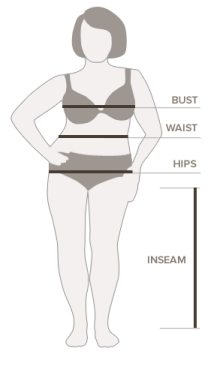Clothing Size Chart - a Woman's Must
Why is a clothing size chart a must? Well answer this, what do you think makes a well dressed woman stand out from the crowd? You many not realize it, but she is wearing her correct size. Too tight and she looks trashy. Too baggy and she looks sloppy. A woman's size unfortunately can change like the seasons. That is why it is so very important to know your measurements and use a clothing size chart when shopping for plus size clothing. And ALWAYS buy the size you currently are and not the size you hope to get into! If you are like me, I have often bought a smaller size because my goal was to lose the weight. That never happened. Eventually the trend faded into the sunset and off it went with new tags and all to Good Will. I don't even want to know how much money I have wasted over the years.
Using a clothing size chart is also very important because you may not wear the same size on top as you do on your bottom half. For instance, you may be a size 16 on top, but a 14 on your bottom. It's not uncommon for women to wear two different sizes at the same time.
Always buy according to your largest size. It may make a clothing
item ill fitting everywhere else, but that's when knowing a good tailor or seamstress comes in handy. They can make the proper alterations for you.
STOP! - Before Using a
|
 |
 Inseam: This is the distance from the uppermost inner part of your thigh to the bottom of your ankle. If you have a pair of pants that fit you perfectly, measure the inseam of the pants from the crotch to the hem. Keep in mind what heel you plan on wearing and take that into consideration in the pant length. |
Chest: Place one end of the tape measure at the fullest part of your bust, wrap it around (under you armpits and back to the front) to get the measurement. Waist: Circle the tape around your natural waistline (above your belly button and below your rib cage) like a belt would. If you don't have a waist, measure right around the navel line. Hips: Measure you hips at your very widest part even if that is right above your thighs. Height: This is important when you are determining petite, regular or tall sizes. Torso: This is measurement is important when buying a one-piece bathing suit. This will prevent buying a suit that sags or scrunches you in between your shoulders and hips. Too short and you run the risk of unintentionally wearing a thong. Run the measuring tape from your shoulder, and take it over your front diagonally, continue between your legs and then over your back diagonally to your shoulder where you first started. |
Let Your Measurements be Your Guide
The clothing size charts and international conversion charts below are pretty standard, but some designers and retailers size their clothing differently. You may buy a size 18 top from one store and purchase another size 18 top elsewhere. They are the same size, but one may fit bigger or smaller on you.
If you are shopping for clothes online, it's a good idea to check the sizing used by each retailer first. Not all designer plus size clothing stores use standard measurements. When selecting the proper size in clothing, always go by your largest measurement.
International Plus Size Clothing Conversion Chart

International Plus Size Pants, Trousers, Jeans Conversion Chart

International Plus Size Panty Conversion Chart

plus size clothing, clothing size chart
Resources: Oprah.com, Addition Elle, PenningtonsPlus











